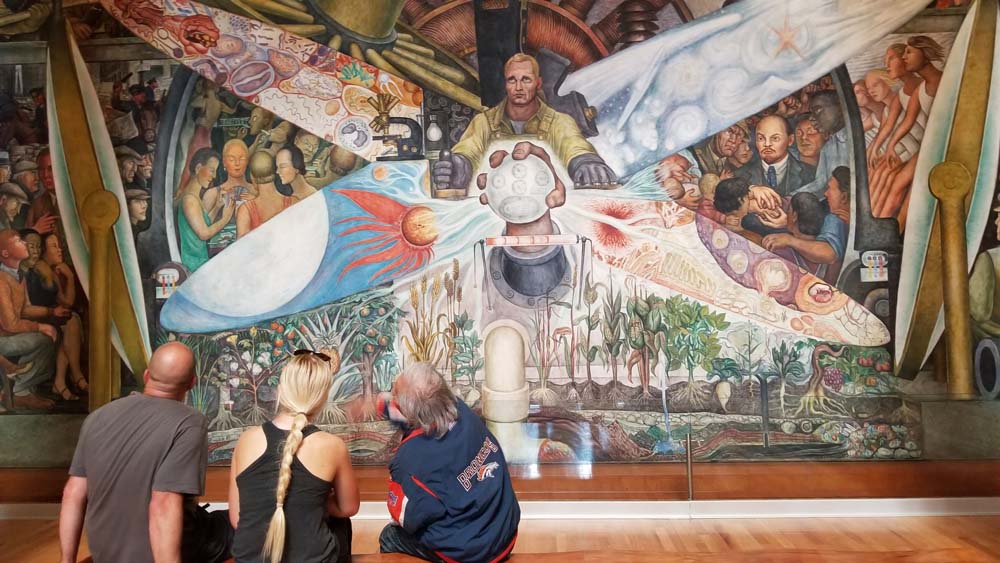 Inspirietry
Inspirietry
It always surprises me, the things that inspire me to learn about something. I became slightly obsessed with Diego Rivera and Frida Kahlo during our time in Mexico City. I am embarrassed to say that I didn’t know one thing about Diego Rivera when we arrived, but I have a friend who told me to see the Diego Murals in Mexico City.
Serendipitously, we went on a tour that included the Frida Kahlo Museum (above) and so in preparation, the three of us watched the biopic, Frida. I had seen Frida when it first came out in 2002, with my neighbor. We were just getting to know each other and the only thing I remembered about the movie was how uncomfortable I felt watching parts of it with my new friend. This time, I was again reminded of that feeling while watching it with my teenage daughter, but at least I got more out of the movie. I couldn’t stop thinking about Frida, she seemed so alive and honest, even though her life was full of pain.
Frida Kahlo was born in 1907, in Coyoacán, Mexico City, Mexico. Her life was not usual. Her father was a photographer who had immigrated from Germany and married her mother, a woman of Spanish and Amerindian descent. She was very close to her father who seemed to adore her keen intelligence and fiercely independent spirit. She had polio as a child and then was terribly injured in a freak trolley wreck as a teenager. She endured countless surgeries and endless days lying in bed in a body cast recovering. In an effort to be free from her pain and immobility, at least for a little while, Frida began to paint. She eventually walked again, but constant pain and health complications were always a part of her life. Before the accident, she attended a private school and hoped to be a doctor, but after her injury, she turned to art.
In 1922, Frida was attending a prestigious private school where Diego Rivera was working on a mural. She liked watching Diego paint and told her friend that she would marry him someday. In 1928, six years after the accident, Frida asked Diego to evaluate her work and he encouraged her to continue painting. They were married the next year and their relationship was tumultuous at best. Diego was an admitted womanizer and it was his third marriage, but Frida loved him fiercely. She divorced him after ten years of marriage when he had an affair with her sister, only to remarry him a year later. Frida was no angel though and had affairs with both men and women. In 1937, she and Diego hosted Leon Trotsky and his wife at the Blue House when the Mexican government offered them asylum. That all ended when Frida and Trotsky had an affair and Diego couldn’t stand it.
Frida was often in pain both physically and emotionally and her paintings reflect this with raw honesty, “Since my subjects have always been my sensations, my states of mind and the profound reactions that life has been producing in me, I have frequently objectified all this in figures of myself, which were the most sincere and real thing that I could do in order to express what I felt inside and outside of myself.” The painting features her relationship with her mind and body. “Frida Kahlo once said, “I paint myself because I am often alone and I am the subject I know best.”
One of Frida’s sketches
I read a criticism somewhere that Frida was self-absorbed. Maybe she was egocentric, but she is inspirational to me because she wasn’t afraid to know herself, she wasn’t afraid to be herself, and she took her pain and processed it through her art. There is a song, “I Won’t Let You Go” by James Morrison that Scott tells me has an important message. Following are just the first few lyrics, but I think Frida has captured the hearts of so many people because she was brave. Her life was painful and scary and she did not back down from it, instead, she took time to “feel around,” explore the pain, and make art out of it.
When it’s black
Take a little time to hold yourself
Take a little time to feel around before it’s gone…
But what about Diego, you’re thinking? Diego was a painter who believed that art was for everyone, not just those who could afford to purchase it or see it in a museum. The best way for that to happen was if he painted huge murals in public places. Born in 1886, in Guanajuato, Mexico, he showed an early talent for drawing and was studying art at the San Carlos Academy of Fine Arts in Mexico City when he was 10. He also showed an early interest in politics and social issues when he was expelled from the academy for leading a student protest against the newly reelected president of Mexico, Porfirio Díaz. By the time he was twenty-one in 1907, he was in Europe studying art and making friends with Picasso and other modern painters. He was inspired by the Mexican Revolution (1914-15) and the Russian Revolution (1917) and joined the Mexican Communist Party in 1922.
Rivera wanted to make art that reflected the lives of the working class and native people of Mexico. He seemed to be able to paint in any style, but his passion was to depict the stories of the people and society that he observed. Often his take on society offended people, even the people who were funding the work. Diego made friends and lost them, traveled the world womanizing, studying, teaching and painting. He seemed to create drama wherever he went.
I wanted to see as much of Diego’s work as I could and I found a great blog with a very reasonable itinerary and so my incredibly enthusiastic sidekicks and I set off on a Diego Mural hunt.
Above, the beautiful Palacio de Bellas Artes which is nice just to walk around and admire even if you never go inside. Supposedly there is a cafe in the eight-story Sears store directly across the street where you can get a great picture of the building.
Inside the Palacio de Bellas Artes is this mural called “Man, Controller of the Universe.” It is a recreation of the original “Man at the Crossroads” which was commissioned by John D. Rockefeller Jr. for the Rockefeller Center in 1932. I think I might have mentioned that Scott and Ashley were not in a museum mood, but then one of those magical things happened that you can’t plan. We went on a Sunday, a day that is free entrance. I had noticed this man at the door of the museum (mostly because he was wearing a Broncos jacket), waiting for it to open, and then there he was sitting in front of the mural all by himself when we arrived. He was staring at the mural and Ashley sat down on the opposite side of the bench and was staring at the mural and then he started talking to her.
I love those moments when I know without a doubt that I am a good parent. Parenting is hard for two reasons, I love my kids more than anybody and I have no idea what I am doing. I try to be kind, loving, honest, open-minded and have my good sense of humor and patience on standby, but I am human and fail at being that person on a regular basis. This was one of those mornings that I just wanted to go see some murals and people were not cooperating at my level of interest…and I felt a little bit guilty because of what else?…parenting
Take, for example, the decision to remove Ashley from her traditional high school experience this year and travel, just the three of us. It was a little different when Grant was in tow because there were two kids, them against us. They had a built-in buddy, a friend, confidant, sounding board, and someone to complain to when their mother marched them off on a day of art immersion. Now, Ashley gets both of her very involved parents all to herself. Of course, we gave her the final choice of what she wanted her sophomore year to look like, but it’s hard to know what I want most of the time, so how do I expect her to know what she wants? So, here we are in Mexico City, a little jet-lagged, a little sad without Grant, a little tired, a little anxious about the coming year. and it hasn’t been an easy week and now we’re at a museum, but watch what happens…
I loved watching the progression of the conversation even though I couldn’t hear a word.
They must have chatted for over half of an hour and by then the museum was getting busy and people were asking them to move so they could take pictures. I watched this interaction take place and I thought, okay you’re a good parent, she might not have any peers this year, but this kind of experience doesn’t happen in a classroom…art, history, culture, connection, and the entire conversation was in Spanish.
Okay! Enough about my accidental good parenting…By 1934, the partially completed mural was destroyed amid robust controversy. It’s complicated, but nothing less than what I would expect from my new friend. Let me see if I can break it down.
Diego was on fire. Despite his political views and stubborn, independent, diva-esque personality (none of which were ever a secret…ahem, Rockefellers) he was a popular, prolific and sought-after artist. Oh, and by the way (ahem, Rockefellers), he was in the United States painting murals because the American ambassador to Mexico, Dwight W. Morrow, was a big fan and took pity on him. Diego had been fired from his job at the Academy of San Carlos for his radical ideas about education and expelled from the Communist party for his cooperation with the Mexican government. So, Morrow offered him an all-expense paid trip to the US to paint. And did he ever paint. For four years, Diego created his brand of art in San Francisco, New York, and Detroit with themes of unions, education, industry, and art.
The Rockefellers wanted a piece of the action. They wanted a mural by Diego Rivera on their building right in the middle of New York City. I mean, Diego Rivera was…all…the…rage. The theme of the Rockefeller Center was “New Frontiers” and Rivera was asked to show a man at a crossroads, looking with uncertainty, but hope and vision, to a new and better future. Sounds straightforward enough, right? It’s not and you can read about it for days on Google, but for now…
Oohh but wait, what is going on in the United States in 1932 that might make “crossroads” significant? The Great Depression is in full swing, unemployment is high, the economy is in a nosedive and Roosevelt has been elected president. The atom has just been split and there is mass starvation in Russia. Germany is in chaos, Hitler runs for president and even though he doesn’t win, the Nazis are quickly gaining popularity. The world is definitely at a crossroads. Back to the Rockefellers…
The Rockefellers signed off on Diego’s proposal and Diego started painting on plaster mind you, this was going to be a real fresco (permanent and unmovable, much like a tattoo). Some people started talking, making fun of Diego for painting for the Rockefellers. The World Telegram newspaper ran the headline: “Rivera Paints Scenes of Communist Activity and John D. Jr. Foots the Bill.” So Rivera, never one to shy away from controversy, added Vladimir Lenin to the mural. And then to make matters worse or just more interesting, he added Rockefeller Sr. to the mural drinking with “women.” It wasn’t a flattering depiction, to say the least.
Deigo was asked a few times to fix the mural, but he refused and so the Rockefellers paid him his full commission and covered the unfinished work until it could be peeled off of the wall. Of course, the destruction of art caused an uproar in itself with Diego writing in a letter, “If someone buys the Sistine Chapel, does he have the authority to destroy it?” That is a good question.
E.B. White (I know, I was shocked too…he wrote Charlotte’s Web, Stuart Little, Trumpet of the Swan, and contributed to The New Yorker magazine for over fifty years ) wrote a poem published in The New Yorker called “I Paint What I See”
I paint what I paint, I paint what I see,
I paint what I think, said Rivera […]
I’ll take out a couple of people drinkin’
And put in a picture of Abraham Lincoln; […]
But the head of Lenin has got to stay!
It’s no good taste in a man like me,
Said John D’s grandson, Nelson. […]
For this, as you know, is a public hall.
And people want doves, or a tree in fall,
And tho your art I dislike to hamper,
I owe a little to God and Gramper.
And after all,
It’s my wall…
We’ll see if it is, said Rivera.
The poem sums up the story perfectly and I am convinced that Rivera won in the end. Even though the original was destroyed, it will live on in infamy and you can still see a version of it in Mexico City.
And one last photo before we move on from the Palacio de Bellas Artes. This is a painting (not a mural) titled “Russian Revolution” (1933), which is interesting knowing a little bit about our crazy guy, Diego. This painting features Vladimir Lenin and Leon Trotsky (not them again!) speaking to the workers of the world promoting the working class and socialism.
Moving on to Museo Mural Diego Rivera, a tiny little museum built to showcase one of his most famous murals, “Dream of a Sunday afternoon in Alameda Central Park,” painted in 1947. The museum is at the other end of the park from Palacio de Bellas Artes and nearly impossible to find, just keep asking people. Like “Man, Controller of the Universe” there is so much information packed into this piece of art. I look at Rivera’s works and think that his head must have been so full of thoughts, feelings, and connections. There is a map and legend in the back of the room that explains all of the people and their significance which is very helpful but still, you could spend days understanding the history behind all of the images and allusions.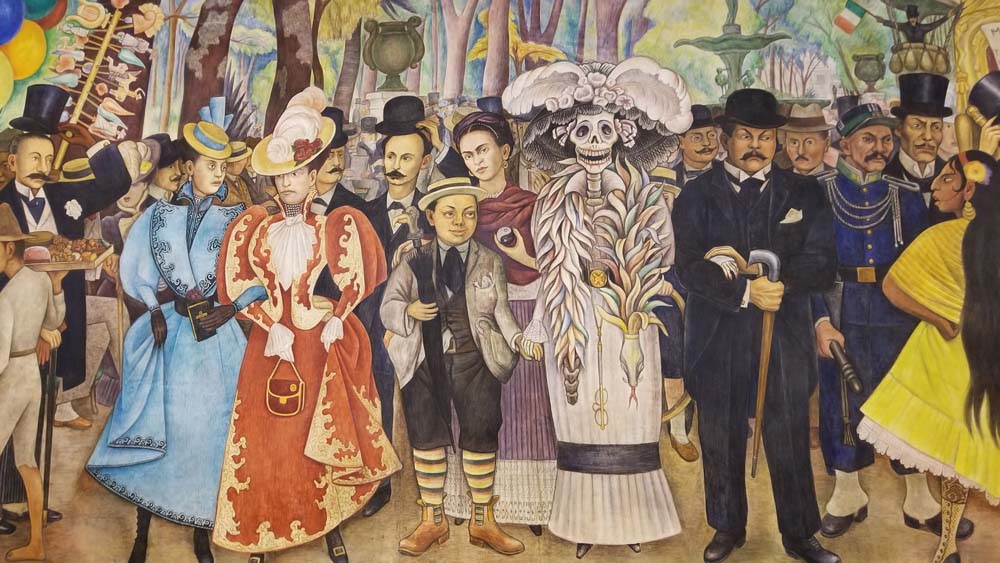
This section of the mural attracts the most attention. Diego, as a boy, is holding the hand of La Catrina (the well-dressed skeleton), and Frida Kahlo is standing behind them. The elegantly dressed man to the right of the Catrina is famous Mexican artist and printmaker Jose Guadalupe Posada. Posada prominently featured La Catrina in his own prints, beginning in 1910, to mock the upper class as being empty, dead inside. Currently and as far as I can tell, La Catrina has evolved to symbolize many things like unity, cultural pride and celebration of death.
Lastly, and my own personal foray since my sidekicks were tired of my obsession, was the Secretaría de Educación Pública. Rivera’s murals cover three levels of the interior courtyard of the Mexican government’s Public Education Ministry.
It’s a beautiful building and quiet in the chaos of Mexico City. Be forewarned, you must leave your driver’s license at the gate to visit.
The first level includes murals that depict life in different regions of Mexico. The murals reflect popular and religious traditions, as well as the lives of laborers and agricultural workers. The fading murals painted between 1923 and 1928 are constantly being restored.
The second level is more revolutionary in theme and of course, I wanted to see the mural with Frida in it. There she is in the bottom right corner, handing out ammunition.
These murals are on the third level “Orgy” is on the left and “Wall Street Banquet” on the right.
There you have it, Frida and Diego, Diego and Frida. Two people, different in so many ways, yet exactly alike in their captivating and reckless ambition to be true to themselves. Artists who let you see into their hearts and minds, much like looking at a child’s artwork. Even though you don’t understand all of it, there are pieces to identify with which will make you think or feel. Rivera found his art in the way the world spoke to him and he painted his interpretation of people interacting in a society. Frida’s inspiration was found within and she painted her relationship with her body and mind. They were both full of feelings and thoughts that could not be contained within themselves and maybe that is why they were attracted to each other, they must have sensed a kindred spirit in each other. Diego and Frida were beautiful, outspoken, and unapologetic in their thoughts and feelings. They weren’t afraid of saying what they felt or being who they were, even it offended political groups, dangerous regimes, each other, famous artists, mothers and on and on. They aspired to know themselves, to be what was important to them, and in that, they have inspired me to get to know myself a little better.



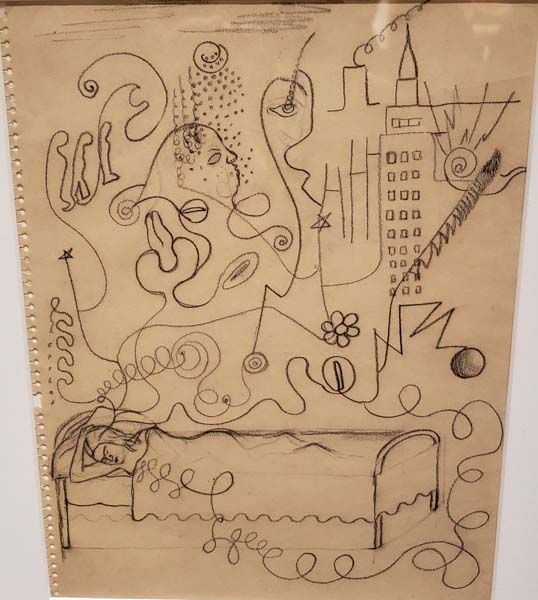
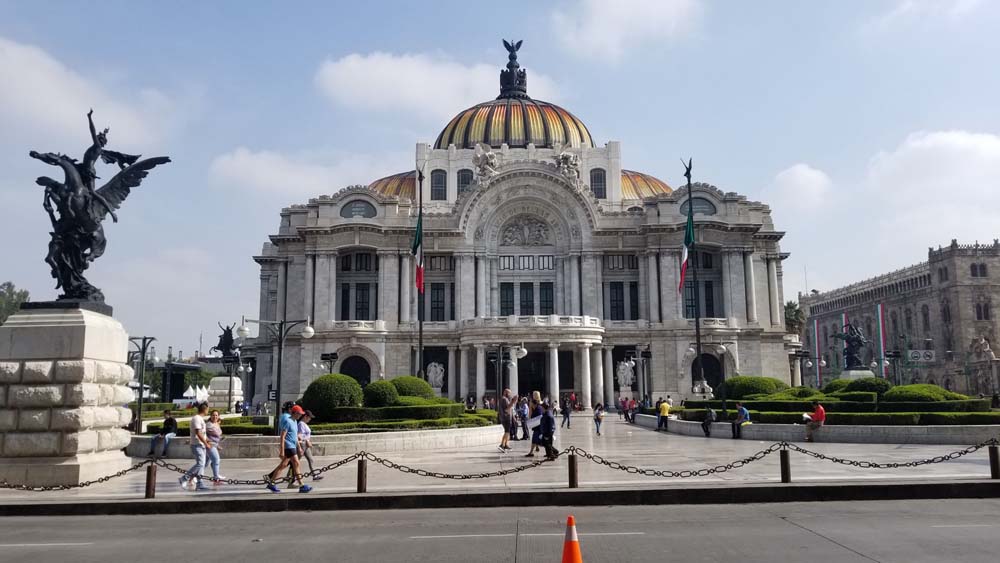
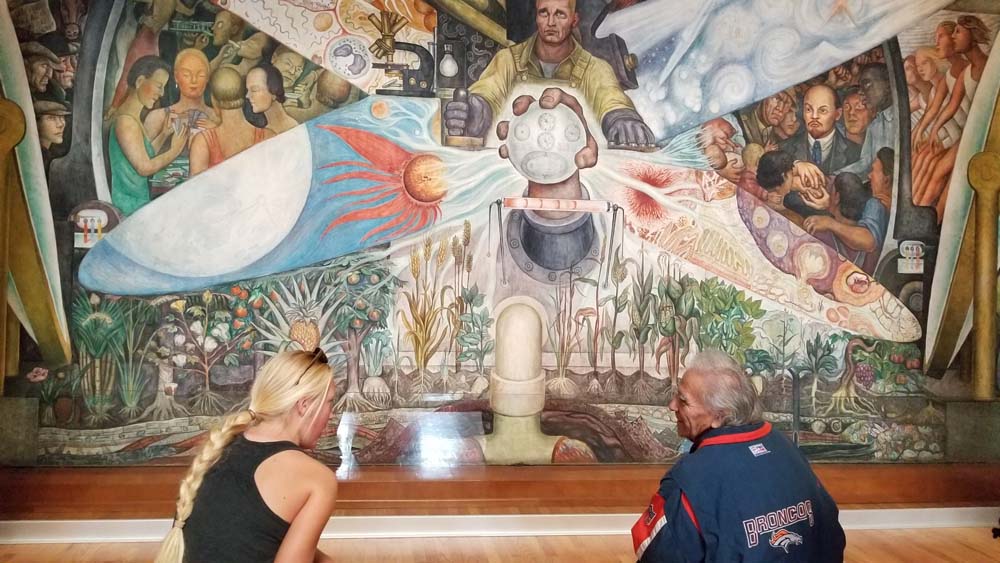
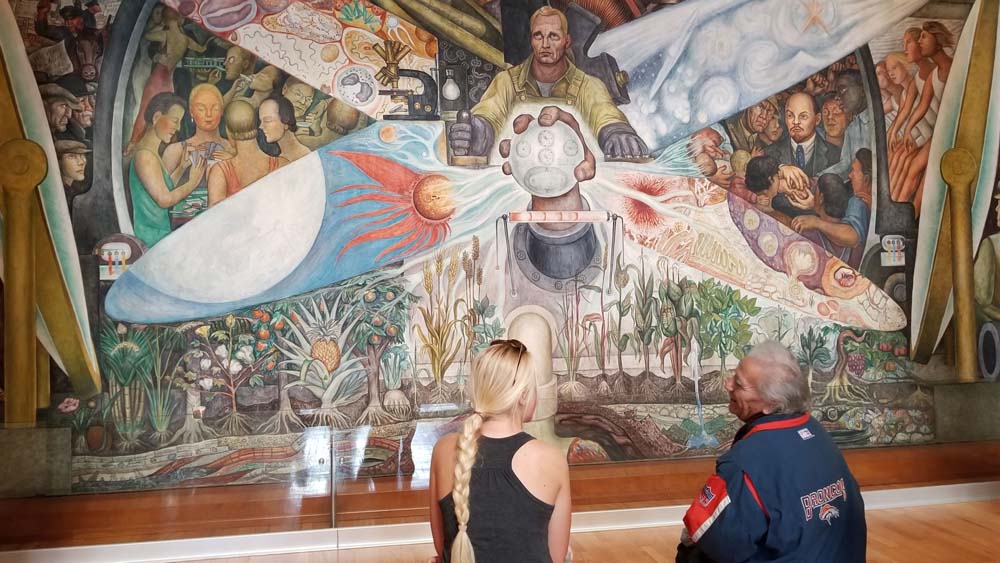
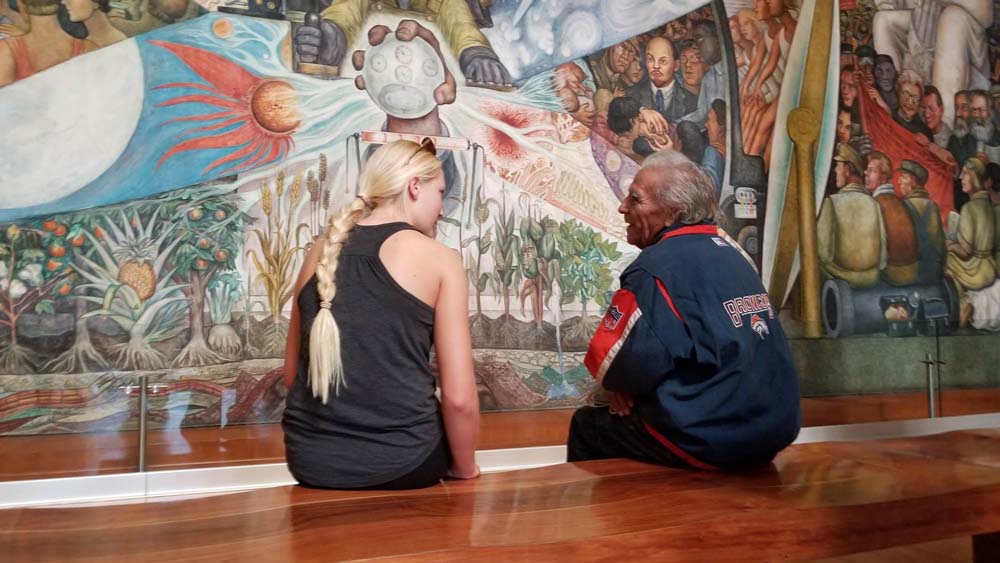
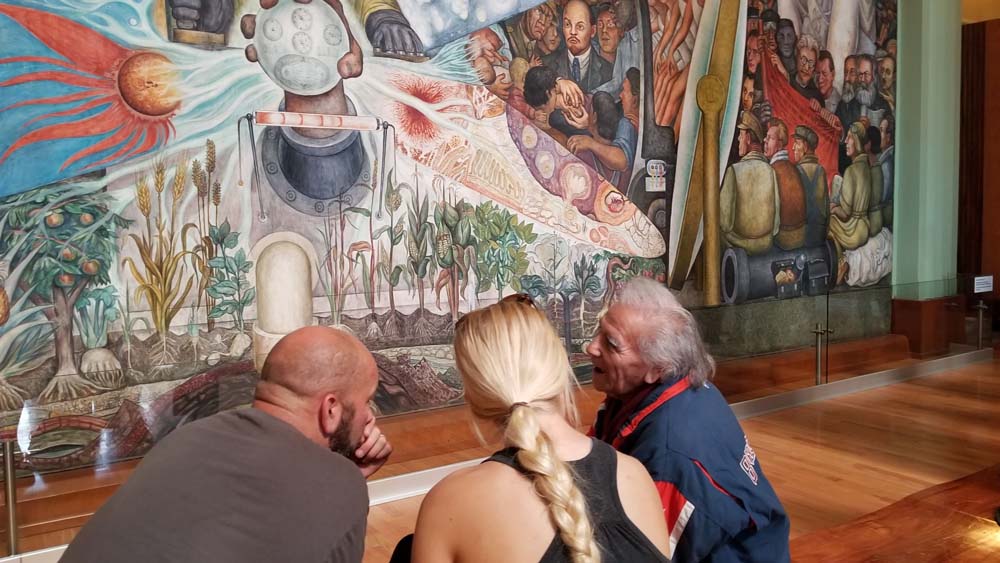
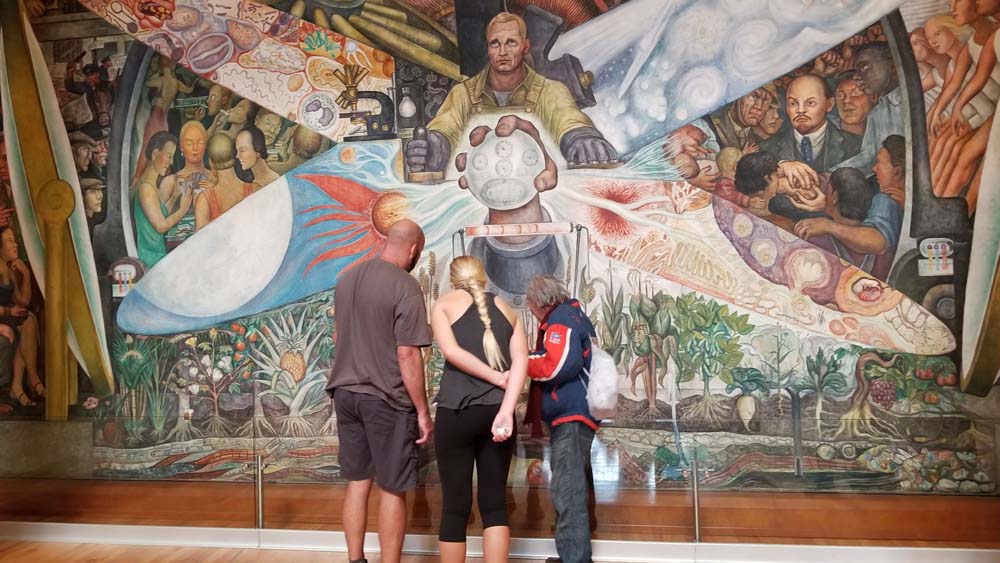
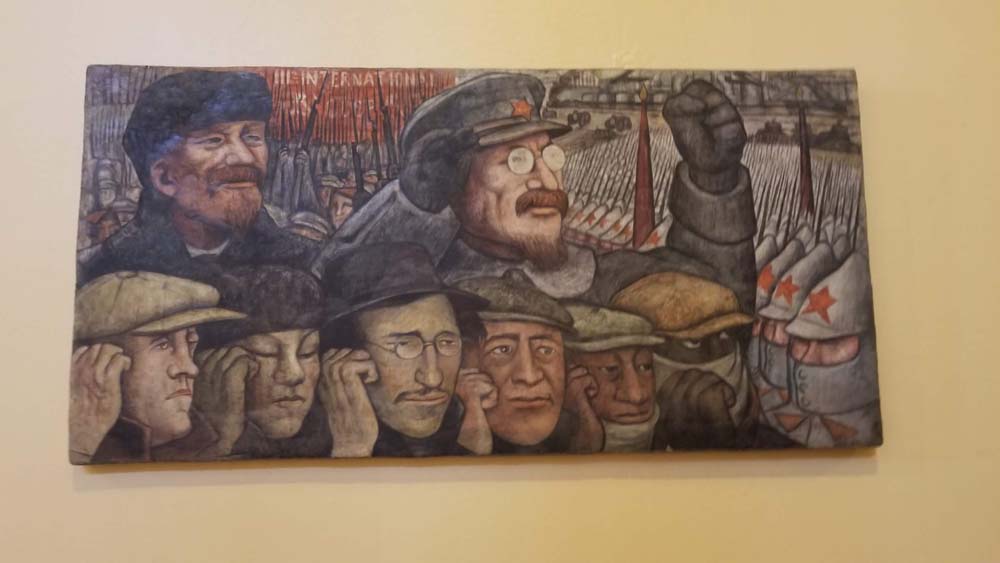
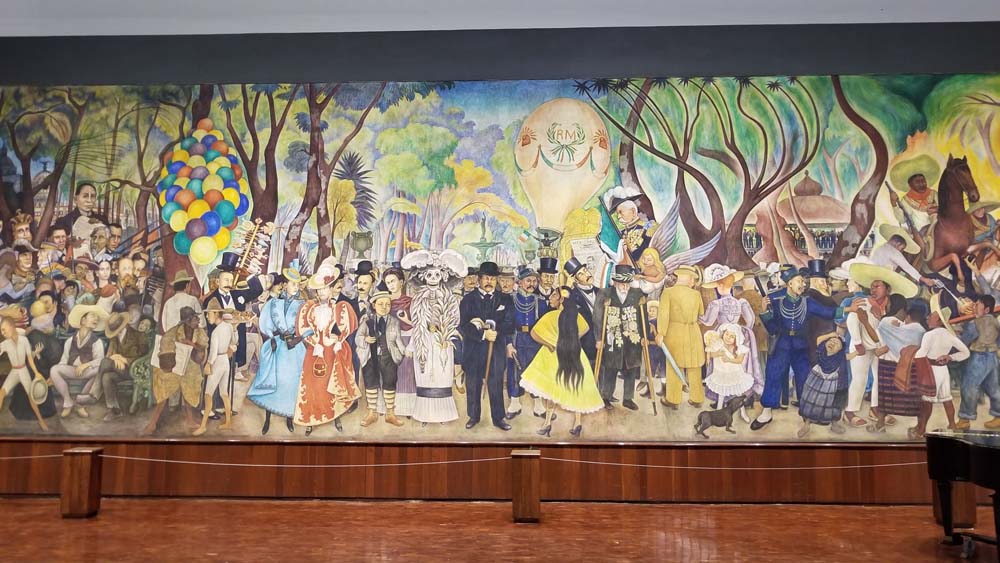

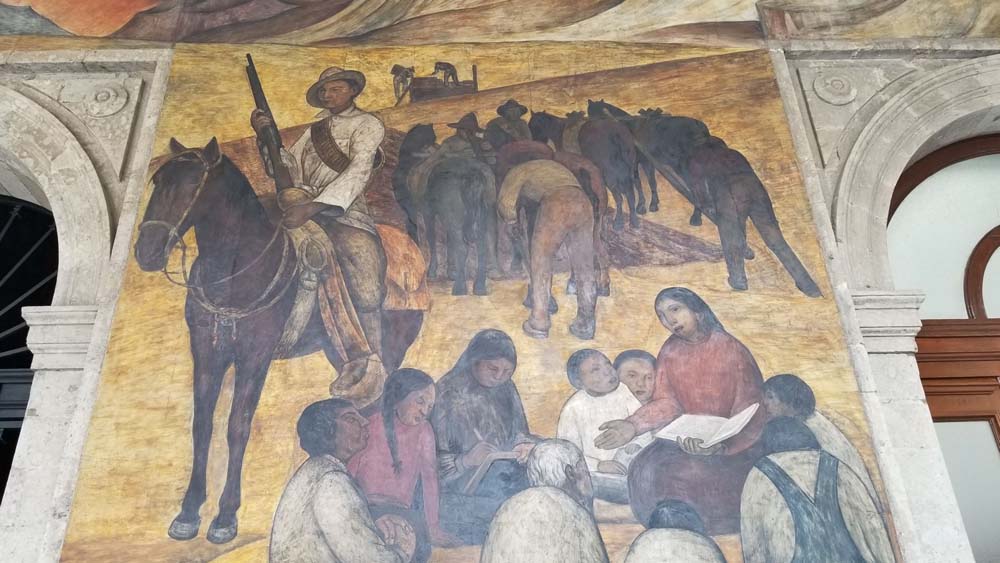
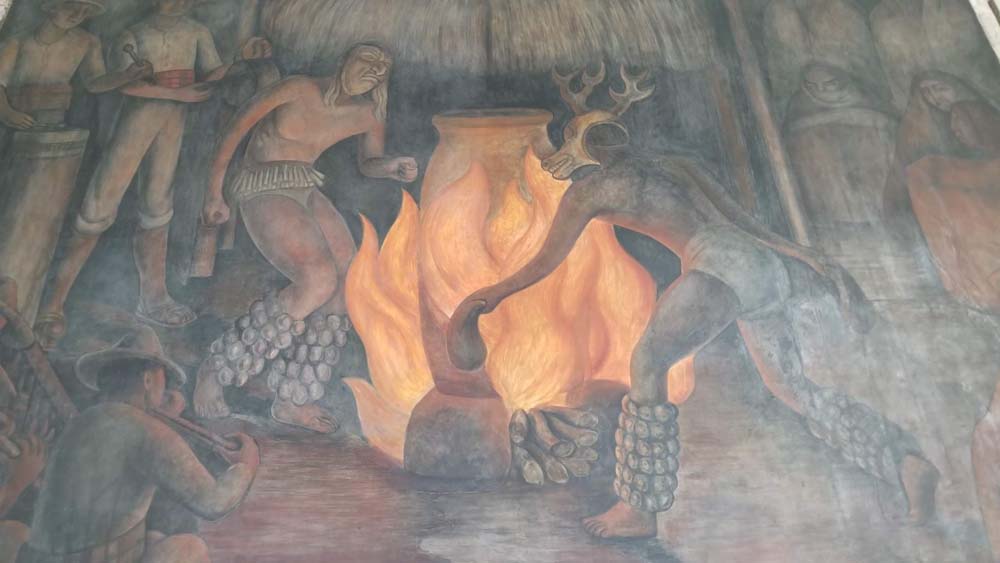
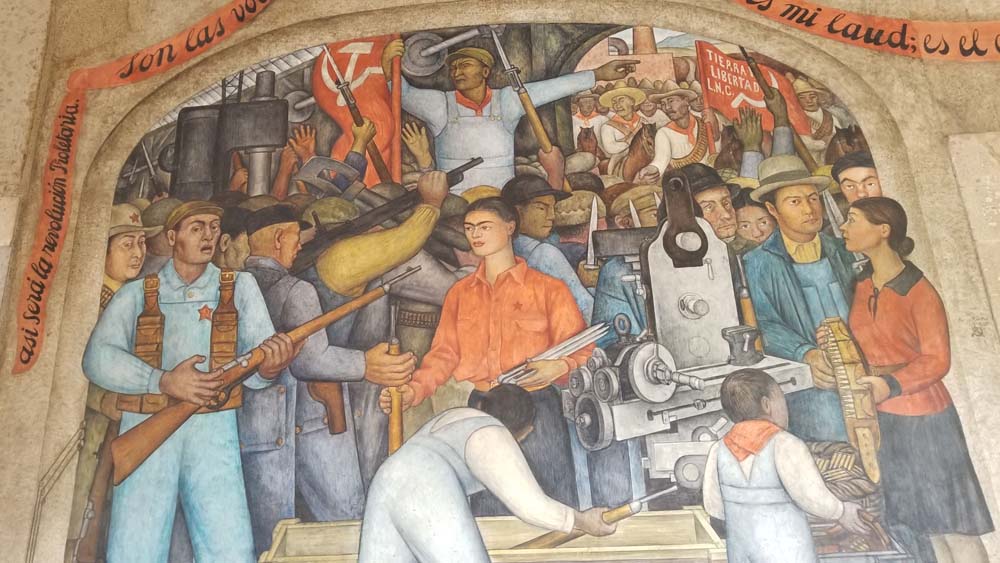
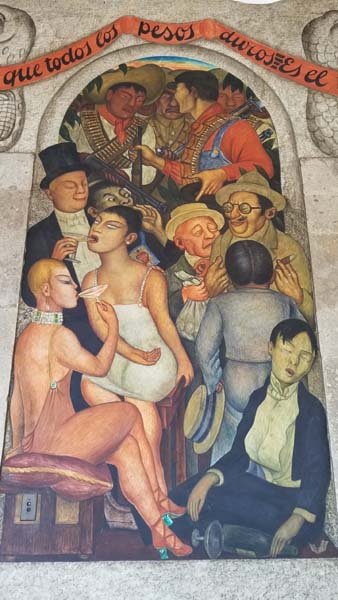
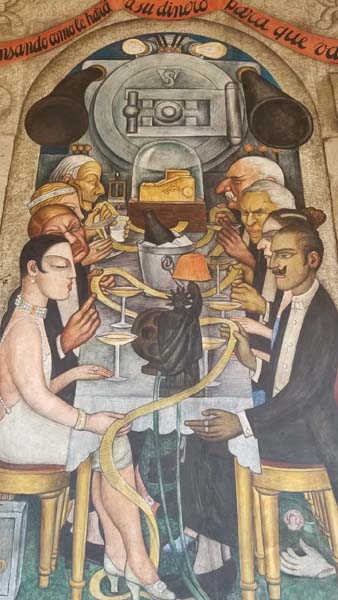
Hi, very nice website, cheers!
——————————————————
Need cheap and reliable hosting? Our shared plans start at $10 for an year and VPS plans for $6/Mo.
——————————————————
Check here: https://www.good-webhosting.com/